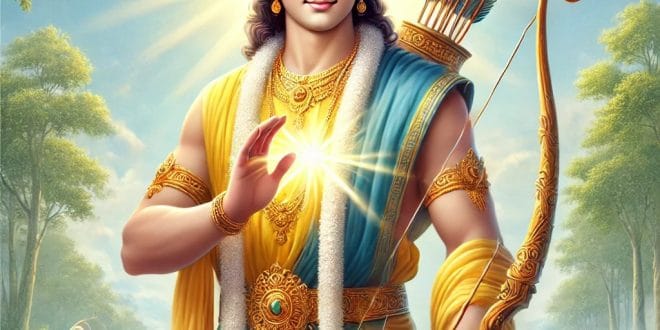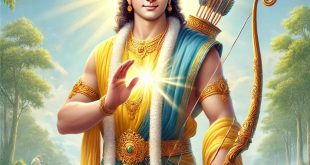In the epic saga of the Ramayana, the clash between Ram and Ravana emerges as a timeless tale of the eternal struggle between righteousness and wickedness, virtue and vice. As we delve into the depths of this legendary conflict, we unravel the intricate dynamics of their relationship, the symbolism embodied by each protagonist, and the profound lessons they impart.
Ravana
The Embodiment of Hubris and Power Ravana, the formidable king of Lanka, stands as a towering figure of arrogance, ambition, and unchecked power. Born with prodigious strength and intellect, Ravana’s insatiable thirst for dominion leads him down a path of darkness and tyranny. His relentless pursuit of power, coupled with his disregard for moral principles and ethical conduct, earns him the epithet of the greatest villain in Hindu mythology.
Ram
The Paragon of Virtue and Righteousness Conversely, Ram, the noble prince of Ayodhya, embodies the highest ideals of dharma (righteousness) and virtue. Revered as maryada purushottam – the perfect man, Ram epitomizes the principles of integrity, compassion, and selflessness. His unwavering commitment to upholding the principles of righteousness, even in the face of adversity, earns him the adoration and reverence of devotees across the world.
Their Relationship
A Cosmic Confrontation of Good and Evil The relationship between Ram and Ravana transcends the boundaries of mortal enmity, symbolizing the eternal struggle between good and evil, light and darkness. Ram, representing the forces of dharma and righteousness, finds himself pitted against Ravana, the embodiment of adharma and wickedness. Their inevitable confrontation serves as a cosmic drama that unfolds on the stage of existence, echoing the eternal battle between virtue and vice.
Lessons Learned
The Dichotomy of Human Nature The conflict between Ram and Ravana offers profound insights into the complexities of human nature and the dichotomy of human existence. Ram, symbolizing the higher faculties of intellect, soul, and love, represents the noble aspirations and spiritual aspirations of humanity. In contrast, Ravana, driven by base instincts, ego, and power, epitomizes the darker impulses and worldly desires that afflict the human condition.
The Triumph of Virtue Over Vice The ultimate triumph of Ram over Ravana symbolizes the victory of righteousness over wickedness, virtue over vice. Despite facing formidable challenges and overwhelming odds, Ram remains steadfast in his commitment to upholding dharma and vanquishing adharma. Through his unwavering resolve and divine grace, Ram emerges victorious, restoring balance and harmony to the world.
The Eternal Saga of Good Versus Evil The epic confrontation between Ram and Ravana serves as a timeless reminder of the eternal struggle between good and evil, righteousness and wickedness. Their legendary battle transcends the boundaries of time and space, resonating with the deepest truths and universal principles of existence. As we reflect on their cosmic confrontation, may we draw inspiration from the unwavering resolve of Ram and the cautionary tale of Ravana, and strive to align ourselves with the forces of light and righteousness in our own lives.
 Lifeved The Keys to a Better
Lifeved The Keys to a Better




 by
by